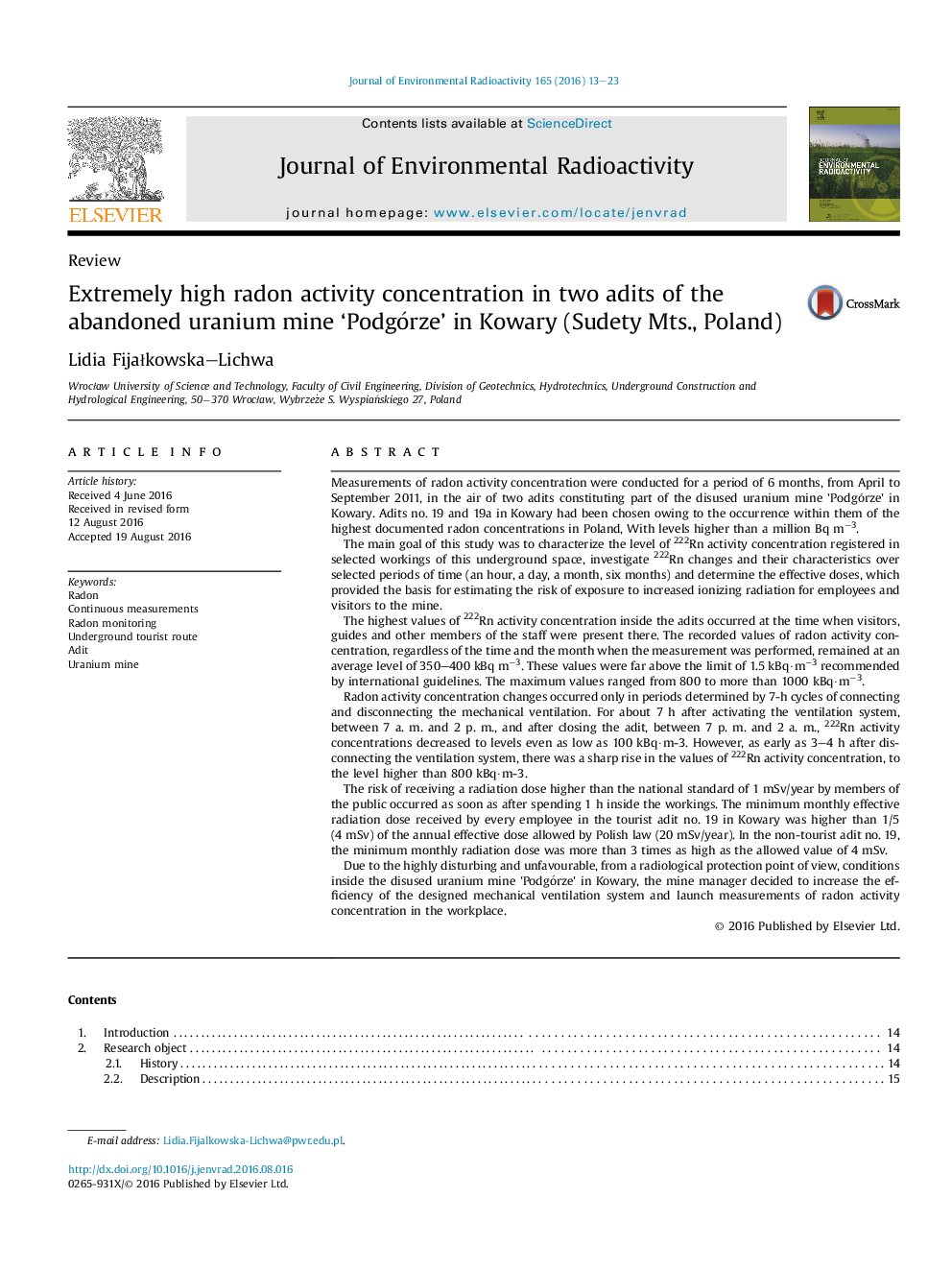| کد مقاله | کد نشریه | سال انتشار | مقاله انگلیسی | نسخه تمام متن |
|---|---|---|---|---|
| 1737733 | 1521572 | 2016 | 11 صفحه PDF | دانلود رایگان |

• Radon values measured in adits of uranium mine.
• They are dependent of mechanical ventilation.
• The effective doses were estimateds.
Measurements of radon activity concentration were conducted for a period of 6 months, from April to September 2011, in the air of two adits constituting part of the disused uranium mine 'Podgórze' in Kowary. Adits no. 19 and 19a in Kowary had been chosen owing to the occurrence within them of the highest documented radon concentrations in Poland, With levels higher than a million Bq m−3.The main goal of this study was to characterize the level of 222Rn activity concentration registered in selected workings of this underground space, investigate 222Rn changes and their characteristics over selected periods of time (an hour, a day, a month, six months) and determine the effective doses, which provided the basis for estimating the risk of exposure to increased ionizing radiation for employees and visitors to the mine.The highest values of 222Rn activity concentration inside the adits occurred at the time when visitors, guides and other members of the staff were present there. The recorded values of radon activity concentration, regardless of the time and the month when the measurement was performed, remained at an average level of 350–400 kBq m−3. These values were far above the limit of 1.5 kBq·m−3 recommended by international guidelines. The maximum values ranged from 800 to more than 1000 kBq·m−3.Radon activity concentration changes occurred only in periods determined by 7-h cycles of connecting and disconnecting the mechanical ventilation. For about 7 h after activating the ventilation system, between 7 a. m. and 2 p. m., and after closing the adit, between 7 p. m. and 2 a. m., 222Rn activity concentrations decreased to levels even as low as 100 kBq·m-3. However, as early as 3–4 h after disconnecting the ventilation system, there was a sharp rise in the values of 222Rn activity concentration, to the level higher than 800 kBq·m-3.The risk of receiving a radiation dose higher than the national standard of 1 mSv/year by members of the public occurred as soon as after spending 1 h inside the workings. The minimum monthly effective radiation dose received by every employee in the tourist adit no. 19 in Kowary was higher than 1/5 (4 mSv) of the annual effective dose allowed by Polish law (20 mSv/year). In the non-tourist adit no. 19, the minimum monthly radiation dose was more than 3 times as high as the allowed value of 4 mSv.Due to the highly disturbing and unfavourable, from a radiological protection point of view, conditions inside the disused uranium mine 'Podgórze' in Kowary, the mine manager decided to increase the efficiency of the designed mechanical ventilation system and launch measurements of radon activity concentration in the workplace.
Journal: Journal of Environmental Radioactivity - Volume 165, December 2016, Pages 13–23